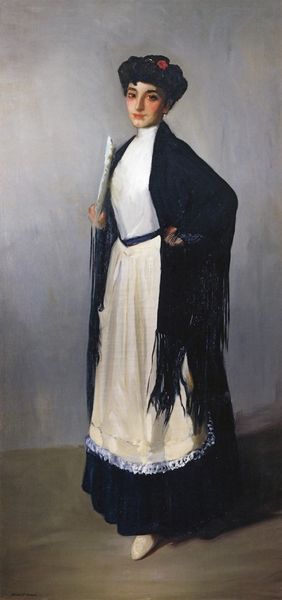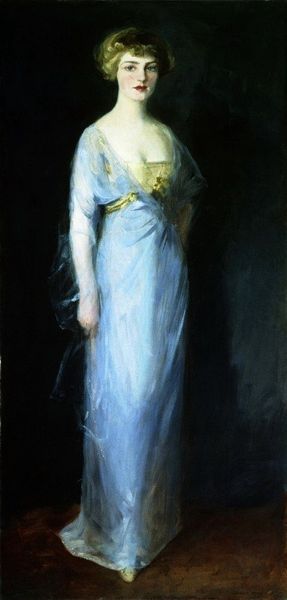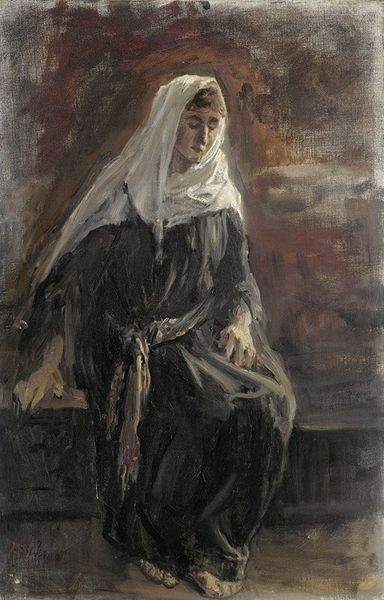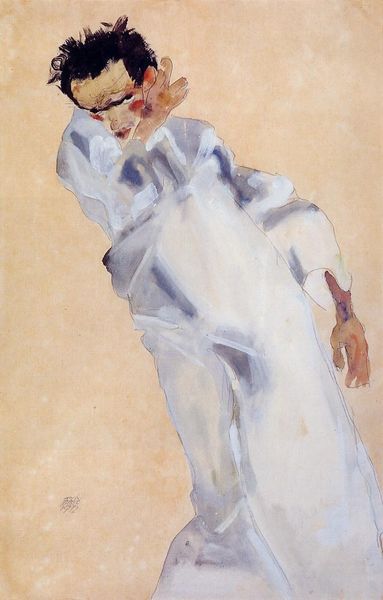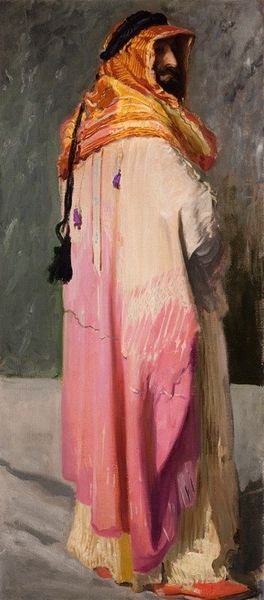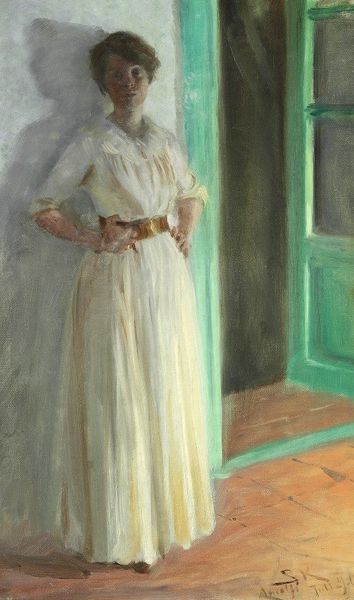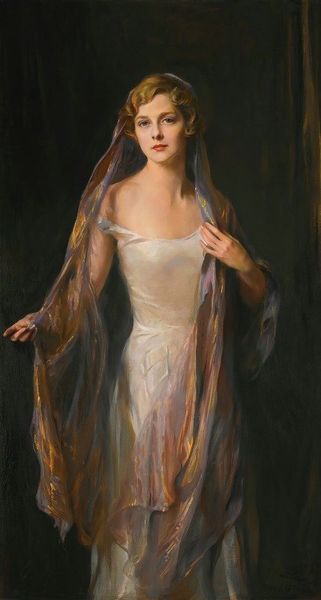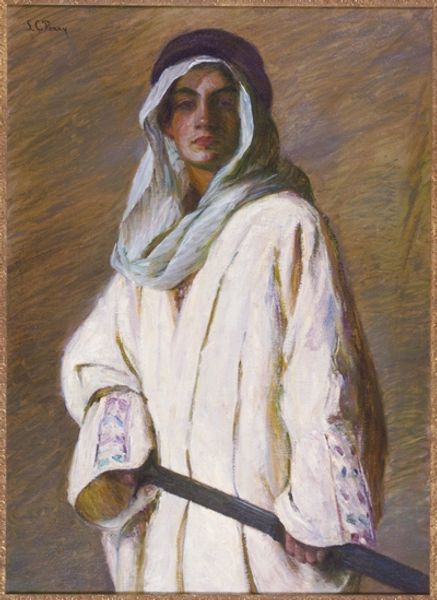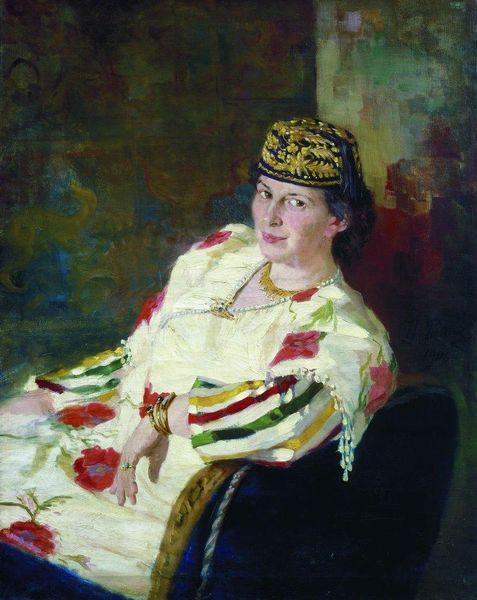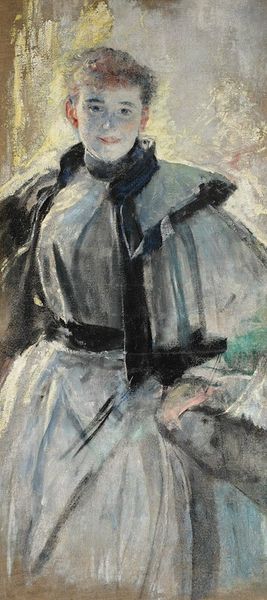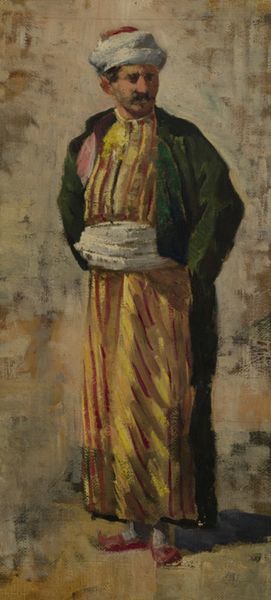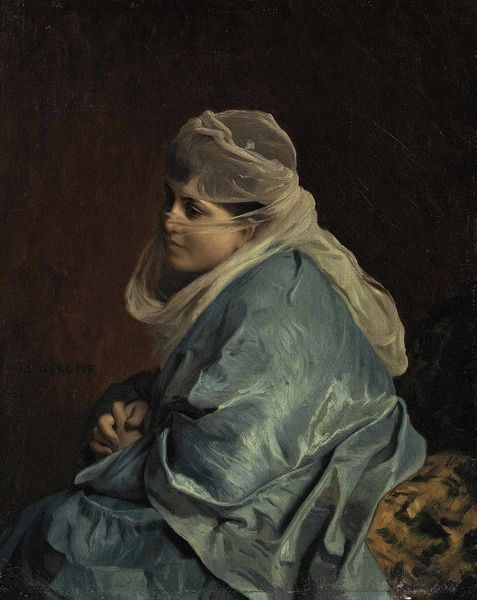
painting, oil-paint
#
portrait
#
figurative
#
painting
#
impressionism
#
oil-paint
#
figuration
#
oil painting
#
portrait art
Copyright: Public Domain: Artvee
Curator: The title of this oil on canvas is "Chula con Pañuelo Azul" attributed to Ramón Casas. It’s an evocative, dreamy painting of a woman draped in white, accented by the brilliant blue of her headscarf. What captures you immediately? Editor: The shawl, the almost absurd, dazzling whiteness of it. It’s so luminous against the muted blues of the backdrop, creating an intimate, dreamlike space around the subject. There’s a boldness in that simplicity. Curator: Yes! That dazzling whiteness does something, doesn’t it? It feels less like observation and more like...memory. You know, like trying to catch the essence of someone in fleeting sunlight. It's so much about capturing a feeling, more than likeness. Editor: Exactly. It's an interesting juxtaposition. On one hand, you have this idealized image of whiteness, likely connected to bourgeois concepts of purity and beauty from the period. But then, there’s the title – “Chula,” a term loaded with colloquial charm and working-class associations, particularly within Madrid’s cultural history. That tension alone makes me wonder, is this an act of appreciation, or perhaps, appropriation? Who was she? Curator: Ooh, interesting. I never quite thought of that potential complexity. Casas walked a fine line, you know? He loved depicting modern life but had to negotiate the expectations of his patrons. He had an interest in modern types, painting Roma women in France or the cafe society, painting his realities through modern subjects... Editor: Which makes you think. The blue headscarf also invites questions about identity. In different contexts, it could signal religious affiliation, ethnic background, or even just practical daily wear. Curator: True. And thinking about those broader societal structures – I mean, he often portrayed women, often with that slightly detached, admiring gaze. How much agency do we really see in this figure? Is she presented as an individual, or more as a type, an object of aesthetic appreciation? Editor: Precisely. It brings to mind conversations about the male gaze, doesn’t it? This piece, in its elegance, holds up a mirror to the power dynamics inherent in portraiture. We see the artistry, but also must interrogate its role in shaping and sometimes limiting the narratives of the women depicted. Curator: Yes, what I initially saw as simple and dreamlike contains multitudes once we bring that critical eye, huh? I walk away now seeing a picture so loaded with intention that it leaves more questions than answers. Editor: Absolutely. It's a testament to how art, even seemingly straightforward portraits, are never neutral. They are deeply entwined with the complexities of their time and, potentially, offer critical leverage to analyze the past.
Comments
No comments
Be the first to comment and join the conversation on the ultimate creative platform.
